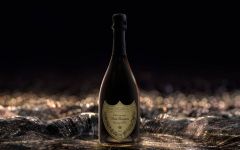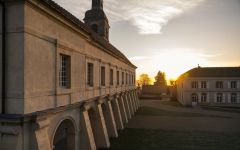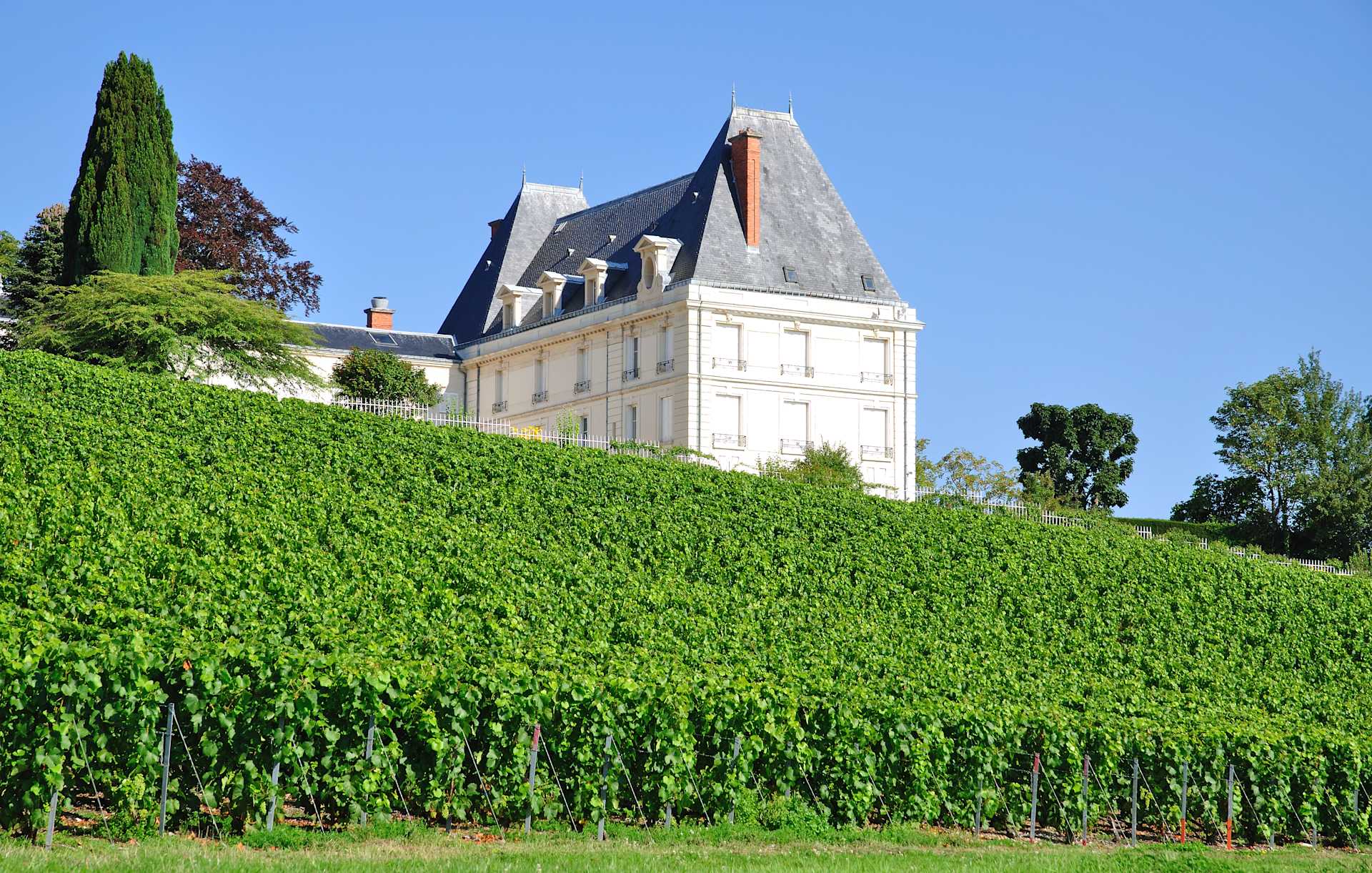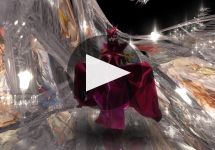Dom Perignon P2 Vintage in Gift Box 2004
-
Wine
Spectator -
James
Suckling - Decanter
-
Robert
Parker




Product Details
Your Rating
Somm Note
Winemaker Notes
The 2004 fruit remains discreet, yet more clearly defined in this second life of the Vintage. Citrusy notes of pink grapefruit and blood oranges gently cede to figs. The additional time on the lees elevates the minerality of the vintage with the sublime maturity that is Dom Pérignon’s signature. Cocoa, mocha, roasted nuts, brioche and honey. The wine balances on the edge with immediacy and surprise, evolving between tension and weightlessness. It has an extreme, tactile precision, deep and sculptural. The sensations come together in a persistent and elegant finish, underlined by sappy, licorice notes.
Professional Ratings
-
Wine Spectator
Delivers mandarin orange, ripe cherry, raspberry and apricot fruit notes, which are an exuberant burst of flavor at the entry point of this otherwise refined and subtle Champagne. The expressive fruit is joined on the lacy mousse by toast, pastry cream, Earl Grey tea leaf and an underpinning of minerally chalk and smoke. Lithe and graceful on the palate, but with a dancer's sense of restrained power. Drink now through 2037.
-
James Suckling
Structured, tight and mineral with so much tension. White grapefruit, lemon rind, dried apple, seashell, iodine, biscuit and blanched almond. Vibrant. Fantastic focus and verticality.
-
Decanter
P2 is the acronym for the Plénitude 2 series, Dom Pérignon’s second life. It indicates that bottles are kept by the house to let them age on the lees and to obtain different expressions of the same wine throughout its life, letting time work its magic and thus acquiring additional complexity. This year, Dom Pérignon’s cellar master, Vincent Chaperon, decided to release the 2004 vintage. ‘2004 was a contrast to 2003,’ he said. After rain in January, the spring was hot and sunny, like the beginning of summer. But the summer was wet, with 50% more rain than in an average year. Despite this, the health of the grapes was stable and the crop was abundant. ‘This is quite a perfect vintage,’ he added. The bouquet impresses with its finesse and elegance, its delicate aromas of pastry, orchard fruit, nuts, and lemon oil, and both iodine and chalky hints with air. The palate is medium- to full-bodied, very charming, with a sappy texture, racy acids, and a long and lingering finish. This is a very harmonious and rather chalky Dom Pérignon, which must be approached in its singularity.
-
Robert Parker's Wine Advocate
The 2004 Dom Pérignon P2 is drinking beautifully on release, wafting from the glass with aromas of sweet orchard fruit, fresh peach, pastry cream, buttered toast and cotton candy that display a less reductive profile than the original disgorgement. Medium to full-bodied, pillowy and charming, with an ample, enveloping core of fruit, succulent acids and a pretty pinpoint mousse, it concludes with a long, sapid finish. Forward and giving, there's no obvious reason to defer gratification.
Other Vintages
2003-
James
Suckling -
Wine
Spectator - Decanter
-
Robert
Parker
- Decanter
- Vinous
-
Robert
Parker
-
Wine
Spectator -
James
Suckling
-
Wilfred
Wong -
Wine
Spectator -
Wine &
Spirits -
James
Suckling










Dom Pérignon: an absolute commitment to Vintage
Dom Pérignon's commitment to vintage is absolute. Each Dom Pérignon is a true act of creation, made from only the best grapes. The champagne's intensity is based in precision, so inviting, so mysterious. Each Vintage has three Plénitudes, and embodies the total faith in the creation that is constantly renewed by Chef de Cave Vincent Chaperon. Coupled with a bold sense of playfulness, Dom Pérignon inspires the greatest creators in the world.Made only from the best grapes grown in one single year, each Dom Perignon's Vintage represents a harmonic balance between the nature of the year and the signature of Dom Pérignon. After no fewer than 8 years of elaboration, each vintage emerges complete, seamless and tactile. Dom Pérignon Champagne is made through an assemblage of Pinot Noir and Chardonnay, created by using only the best grapes harvested from the 17 Grands Crus in Champagne and the Premier Cru of Hautvillers.

Representing the topmost expression of a Champagne house, a vintage Champagne is one made from the produce of a single, superior harvest year. Vintage Champagnes account for a mere 5% of total Champagne production and are produced about three times in a decade. Champagne is typically made as a blend of multiple years in order to preserve the house style; these will have non-vintage, or simply, NV on the label. The term, "vintage," as it applies to all wine, simply means a single harvest year.

Associated with luxury, celebration, and romance, the region, Champagne, is home to the world’s most prized sparkling wine. In order to bear the label, ‘Champagne’, a sparkling wine must originate from this northeastern region of France—called Champagne—and adhere to strict quality standards. Made up of the three towns Reims, Épernay, and Aÿ, it was here that the traditional method of sparkling wine production was both invented and perfected, birthing a winemaking technique as well as a flavor profile that is now emulated worldwide.
Well-drained, limestone and chalky soil defines much of the region, which lend a mineral component to its wines. Champagne’s cold, continental climate promotes ample acidity in its grapes but weather differences from year to year can create significant variation between vintages. While vintage Champagnes are produced in exceptional years, non-vintage cuvées are produced annually from a blend of several years in order to produce Champagnes that maintain a consistent house style.
With nearly negligible exceptions, . These can be blended together or bottled as individual varietal Champagnes, depending on the final style of wine desired. Chardonnay, the only white variety, contributes freshness, elegance, lively acidity and notes of citrus, orchard fruit and white flowers. Pinot Noir and its relative Pinot Meunier, provide the backbone to many blends, adding structure, body and supple red fruit flavors. Wines with a large proportion of Pinot Meunier will be ready to drink earlier, while Pinot Noir contributes to longevity. Whether it is white or rosé, most Champagne is made from a blend of red and white grapes—and uniquely, rosé is often produce by blending together red and white wine. A Champagne made exclusively from Chardonnay will be labeled as ‘blanc de blancs,’ while ones comprised of only red grapes are called ‘blanc de noirs.’
